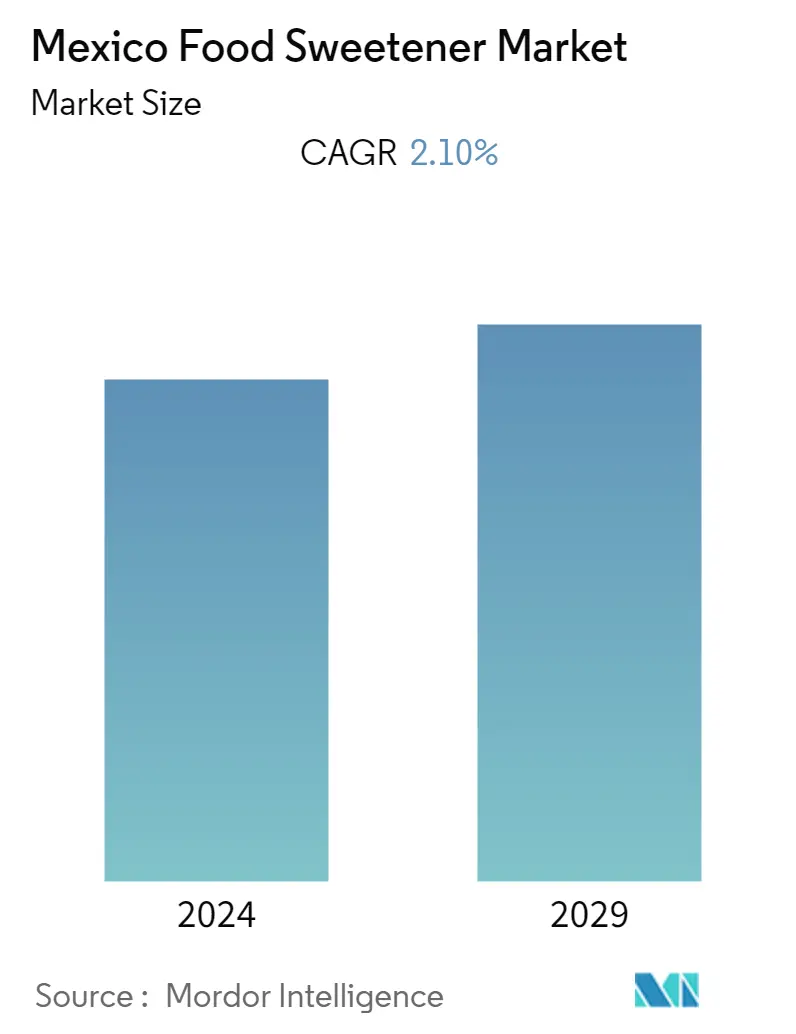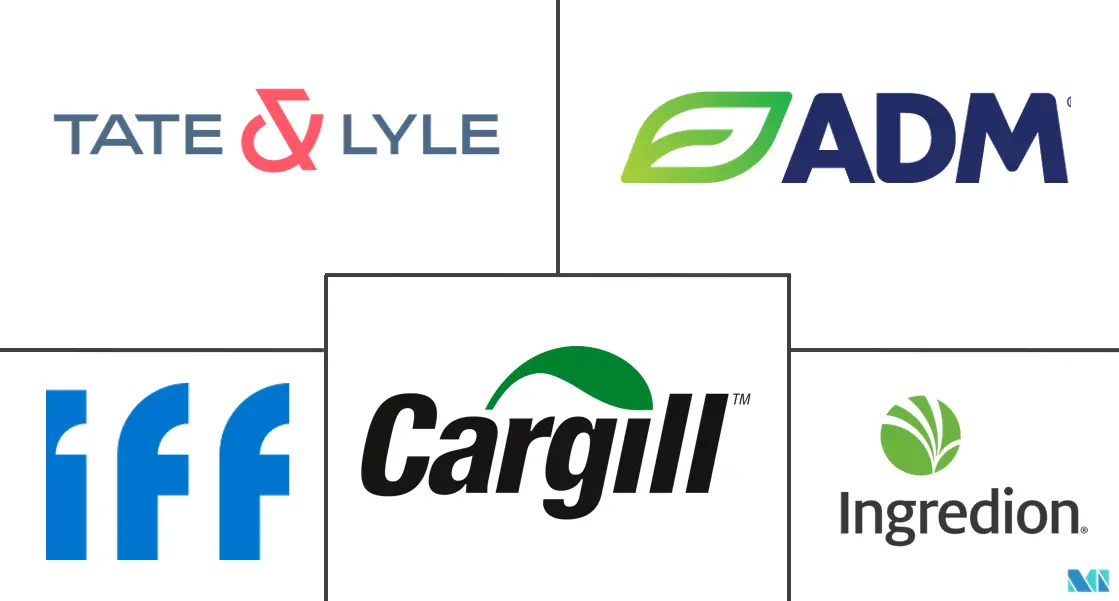Market Size of Mexico Food Sweetener Industry

| Study Period | 2019 - 2029 |
| Base Year For Estimation | 2023 |
| Forecast Data Period | 2024 - 2029 |
| Historical Data Period | 2019 - 2022 |
| CAGR | 2.10 % |
| Market Concentration | Low |
Major Players
*Disclaimer: Major Players sorted in no particular order |
Need a report that reflects how COVID-19 has impacted this market and its growth?
Mexico Food Sweeteners Market Analysis
The Mexican Food Sweetener Market is projected to witness a CAGR of 2.10% during the forecast period.
The increasing concern regarding the prevalence of obesity is encouraging consumers to opt for natural and zero-calorie sweeteners, such as stevia. Furthermore, the consumption of sugar substitutes, such as xylitol, erythritol, and mannitol, is rapidly increasing across Mexico. This is attributed to consumer awareness, government regulations to reduce sugar consumption, and application in many health and wellness food products in the market. The inclination toward low-calorie sweeteners and low-calorie beverages, such as diet coke and low-calorie drinks, and low-calorie foods, such as yogurt, ice cream, and grain-based desserts, has gained popularity worldwide. The physiology of sweetness receptors is also being studied in greater detail, with an endeavor to make foods and beverages sweet without using sugar.
Increased demand for natural non-caloric sweeteners and the high demand for sweeteners in various applications, such as processed foods and beverages from emerging economies, are the major factors driving the market growth. However, an increase in awareness about the negative effect of sugar on consumers' health is likely to hinder the market growth, thereby providing more opportunities for low-calorie sweeteners, especially in bakery, beverage, and dairy products.
Moreover, to control health issues such as diabetes and obesity, in January 2014, the Mexican government implemented a 10% tax on industrialized sugar-sweetened beverages to curb obesity and diabetes. Similarly, the Mexican government wanted to bring down the calorie count of most foodstuffs to a maximum of 284 calories per kilogram. Therefore, it established a sugar tax of one peso per liter for every product that surpassed this limit. Many drinks and food manufacturers incorporated stevia to comply with this law and avoid the tax. Thus, it increased the demand for sugar alternatives in the country.
